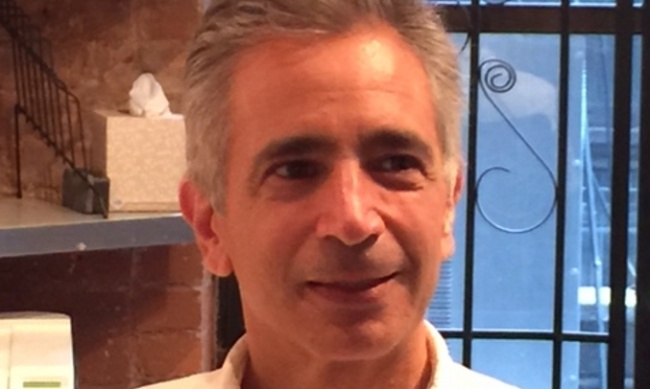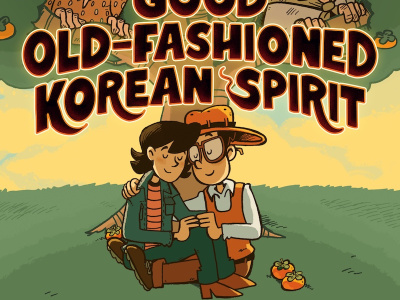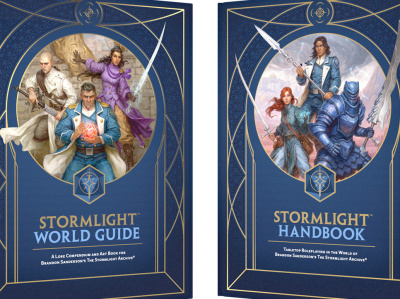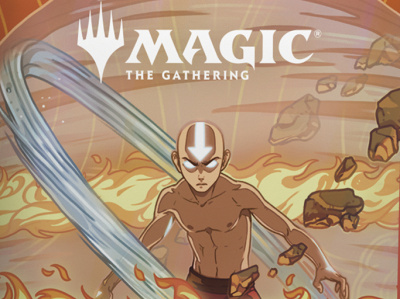It’s been about a year since we interviewed you at the launch of Double Take. Do you have any comments about how that external environment has changed in the last year since you launched Double Take?
It’s not so much the changes as it is the realization about how difficult it is to run an indie company. I was very, very spoiled at Marvel, some of which I fully well understood, like I totally understood how much easier it is to write a good Spider-Man story than it is to write a good story about a new character, because when you write a new Spider-Man story, you have a pre-existing disposition for a lot of people to like it, and you don’t have to do very much in terms of initial character development because there’s an expectation. Whereas with an indie story, with a new character, you have to do all that work up front. You have to hook the reader in that story and introduce the character. And of course, there’s that dilemma that good character’s defined by action so you have to start mid-stream. It’s very hard. It’s hard in a way that I was expecting; the surprise was mostly in the business environment side. As you probably hear from so many independent companies, where we get placement, especially when we are backed by point of sale, the retailers will tell us we’re not quite neck and neck with Marvel and DC, but we’re very respectable and they’re very happy to have us.
But just how few retailers, relatively speaking, have the willingness and/or wherewithal to place an indie publisher. That has been much harder than I thought. I’m happy with the retailers who have taken us. They’re happy and we’re happy with the sell-through rates. But that initial placement, that’s really banging through a brick wall with your head. Because you don’t have many tools--just banging with your head and little bit of money. That’s been much harder than I thought it’d be.
The Big Two and the Big Seven put out a lot of titles, so there isn’t a lot of room for other companies.
It’s nice at Take Two. The company has the resources to support a long term play, and as a game company, they’re used to a IP taking a long time to develop. They’re used to having it behind the wall and springing it on the audience all at once. Comics has a different pace. It’s more of a conversation with your readership that you publish things that you think are pretty good, you see how our readers and customers vote with their feet, or give you feedback, or you’re looking to assess yourself, and you develop over time. But essentially the timing from start to successful property is a few years and the cash for comics is certainly a lot less, but Take Two is used to long-term development processes and they’ve given us the leeway to incubate and build the company the right way. We’re grateful for that and feel we have an advantage over the other indies. I try my best not to complain because I should be thanking my lucky stars more than complaining.
The last time we spoke, you had aligned yourself from writers from The Moth, and you were happy with their storytelling abilities. What’s your evaluation of how that’s working a year later?
I don’t think we could have launched with any success without The Moth writers. We had fun, kinetic-looking stories, for the most part and didn’t really have A-level dialogue. Mostly what we got from the writers was characters talking about what the artist had already drawn. So people walk into the room and turn to the light, and the conversation is "Hey, where’s the light switch? It’s dark in here." That kind of horrible, wincey-type dialogue. And then these really fun narratives from The Moth guys got us a soundtrack to go with some nice visuals.
As to The Moth in general, and as to storytelling in general, it’s just wonderful how that field has exploded. There’s The Moth and there’s another one called Snap Judgment. There’s this wonderful blooming of live, oral storytelling. We certainly found writers from The Moth, but we found writers from other areas, and that’s been good. It’s been trending positively. I know The Moth is doing really well, and the other groups that have gotten involved in oral storytelling are doing really well.
It’s especially true of Spring, with a writer named Jennifer Sodini who wrote this really fun story about getting caught in the hallway of her apartment building in her underwear. That sort of carried us through the first issue of Spring. She’s a very visual storyteller. It was mostly about teens in bikinis and kids diving into a mountain lake and never coming back up. It was fun to look at, but we didn’t have very much to say. So we took that story from Jennifer and put it in the mouths of one of the characters and then we got to the end of that story. So we went to Jennifer with two questions, one is, "if you were that character in that story, what would you do?" and then she helped us figure out what the character would do and that was fun. But we also asked, "after you got back in your apartment and got your clothes on, what happened next?" And she told us the next story about what happened to her the next coming weeks. We’ve been able to maintain some of the momentum that The Moth guys gave us in the first place.
So what you’re describing there, the first story and the second story in Spring, is that all in the first arc that you’re bundling up into the graphic novel?
Yes.
So wasn’t that true for all of them, didn’t they all carry through and write all the issues?
It was teamwork. For the most part the plots were written by Mike Coast, who is our senior editor, and me, and we relied on the Moth storytellers for dialog. Pretty much all the Moth writers that started with us are still with us. The other writer who’s not a Moth guy, he’s just an old-school zombie comic expert, Jeff McComsey. He does FUBAR and Mother Russia, he’s a real star on Kickstarter and all the shows, he’s doing the dialog for Z-Men and Rise. All of these Double Take books are very much like Ultimates, the Ultimates line or Origins and some of the other stuff I did at Marvel where I play a part in the plot-writing and then we had dialog writers and graphic storytellers do the really hard work of making the comic.
A year ago you hadn’t decided what age level or rating you would create the books for. Where did you end up on that continuum. Are these books primarily for adults?
There are some bright line decisions and then there’s a general attitude. Our general attitude is that 12 to 18 is the sweet spot we’d like to get to market. Now you’ve been around the comics longer than I have, and there’s those two audiences. There’s the most important audience today which is the adult comics fans, and if we don’t appeal to the adult comics fans, then we never sell any issues, we never get any brand advocates and we just die. So absolutely these stories are intended to appeal to adult comics fans, and The Ultimates went the same way. The sweet spot long term target was teenagers, but we knew we’d never get any exposure to teenagers unless comic book retailers and core comic book fans got behind us. So in terms of ratchetting there’s a lot of dirty words, but we put hashtags instead of the consonants, so we’re basically bleeping out the curse words and there’s lots of naked people but we don’t show any of the exact naughty bits.
I still believe in the cigarette ban that I instituted at Marvel, and we have the cigarette smoking ban here, with one exception that I’ll let the readers find, but the characters are allowed to smoke all the marijuana they want to. We did get some push-back from retail about all the pot smoking, which to me is just one of those wonderful things about being a grown-up in America in 2016: It’s okay if you kill people and eat them, it’s okay if you kill lots of people and eat them, you can dismember them, chop them up, you can shoot a cannon through their stomach and have their guts fall out, but pot smoking? Oh my goodness! That’s as bad as same sex marriage.
So when it comes to that kind of stuff, I kind of roll my eyes, and you knew me in my Marvel days, I would have taken that little bit of controversy and made it a big deal, and part of the reason was because we had zero marketing money at Marvel, so if we didn’t make noises really oddly and loudly no one would have noticed us. But to answer your question--kid friendly, but there will certainly be some moms who won’t want their kids seeing things that are at this violence level. I’m happy to say that as the books have progressed, we’ve ratchetted down the violence level, that most of our zombies are turning into guerilla rebels and some of them are turning into superheroes. We started the way that was appropriate to start by giving zombie fans the good old-fashioned zombie stuff that they wanted and now we’re transitioning to the place we should transition to, to show you there’s a lot more to the story of our comic books, let alone life of our good guys and bad guys.
We started simple, with a relatively low violence level, some sexiness because people like to look at sexy things. I think we’ve hit a pretty happy medium, I don’t think our books are appropriate for sub-12 13, There’s nothing that comes even close to what they see on their cell phone or computer if they Google the word "girl." They’ll see way more in five minutes of googling than they’ll ever see in one of our comics.
Turning to the business side, you did the Super Packs [ten comics packaged together] for the first two issues, did you do that for all the issues in this first arc?
Yes. We’ve done Super Packs all the way though. We found that initially the larger retailers, the retailers that got behind the program in the first place, had a lot of success with Super Packs, and we continued Super Packs all the way though. The books are still available as individual copies but the Super Pack option is there and if the retailer goes for the Super Packs, then their customers get the books cheaper. As you know the books are only $2.50, the wholesale is $25.00 on [ten titles as] the individuals, but if you buy the 10-pack they wholesale at $10.00, so it’s a dollar a book for retailers, and most retailers just pass that savings on to their customers.
That’s been good. The lesson, I’m sad to say we learned the hard way, is Super Packs supported by POS, by a poster, by a giveaway, by anything, sell great. When we get either lazy or stupid or cheap and don’t do the Point of Sale, they just sit there. And again, we learned the hard way, so right now, as we move forward we’ve just got to take most of our marketing dollars, and they’re substantial, and put them right in the Point Of Sale in the comic book shop.
How many issues were there in that first arc?
Each of the arcs is five issues long.
Click here for Part 2.









